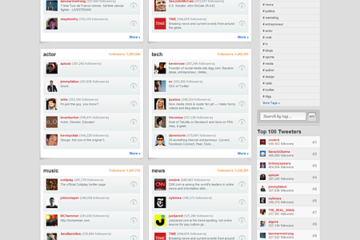Let’s face it: the coronavirus has suddenly plunged us into a world that we scarcely recognize. It’s changed the way we learn, play, and engage with one another. Above all, it’s changed the way that we work.
As the American workforce retreats en masse to the safety of their own homes, business communications have assumed unprecedented importance. And they’re also taking new, and sometimes unexpected forms.
Nowadays, daily business meetings are being held on social media. Documents are being shared via the cloud. Routine conversations between coworkers, with clients, and among managers and their teams are happening through text and instant messaging.
As we adapt to this altered reality and we prepare for life after quarantine, what are the best modes of communication? What communication tools and techniques are best for our pandemic and post-pandemic lives?
Instant Gratification
Unfortunately, as death tolls rise and the employment rate plummets, there’s not a lot to be happy about relative to this pandemic. One bright spot, however, is the fact that we’ve never had more or better technologies in place to help us contend with life on lockdown.
If it had to happen, at least it happened now, when the communication tools we need to transition to homebound life are already ubiquitous in both our personal and professional lives. If you have a robust contingent of millennial workers on the payroll, you’re probably going to find they make the transition to remote work and virtual communications fairly easily. Even for older workers, however, communicating by text has become the norm. If they’re not accustomed to using text messaging for their work lives, they almost certainly do for their personal lives as a way to keep up with the kids and grandkids as well friends and family far and wide.
That experience with text messaging is going to be incredibly helpful as you implement or ramp up the use of instant messaging tools for your business communications. There are a number of affordable, secure, and very user-friendly instant messaging resources to allow your workers to talk to one another in real-time through both direct and group instant messages. Many of these tools even allow for secure video conferencing. With many of these technologies, users can even securely share sensitive documents and collaborate on work products in real-time.
According to recent estimates, Slack is the most popular team communication tool, with approximately 65% of companies currently using it. Skype for Business and Microsoft Teams follow closely behind. It also seems that employers aren’t just opting for a single communications platform. Instead, they’re using multiple tools, with Slack and Microsoft Teams being the most popular combo.
Look Me in the Eye
While the wide array of instant messaging tools are fantastic for supporting strong, fast, and secure communication among your staff, sometimes your employees need to see you and each other. Studies have found that face-to-face communication is essential, especially during challenging times or for engaging in difficult conversations. Giving your team the opportunity to read your facial expressions and body language will help prevent misunderstandings. It’s also going to humanize and personalize the communication process.
Of course, meeting your staff face-to-face isn’t exactly an option while most of the country remains on lockdown. Fortunately, there’s an app for that! While concerns have recently emerged over the security of one of the most popular video conferencing app, Zoom, you still have a number of great alternatives. Platforms like GoToMeeting and Google Hangouts are widely recognized as among the best. They’re secure, affordable, and can support large numbers of users at once.
Get Social (At a Distance)
When you’re thinking about the best modes of communication for our new coronavirus culture, it’s not just communication with and between your staff that you need to worry about. External communications with your partners, stakeholders, and especially your customers, need to be a top priority. Think about it: the lockdown hasn’t just separated you from your staff. It’s also separated you from your customers. To keep those lines of communication open, you’re going to need to get creative.
One of the best things you can do to keep in contact with customers is to up your social media game. Facebook, Twitter, and Instagram aren’t just about socializing with friends and family anymore. Now more than ever, people are turning to social media to engage with public figures, from celebrities to political leaders and religious figures.
They’re also turning to social media to connect with the companies they like. Studies show that more than 60% of customers report following their favorite businesses on Facebook, while more than 50% feel that a strong social media presence reflects a company’s overall commitment to customer service.
Know When to “Listen”
Even when you’re communicating at a distance, there are some best practices that are universal. The most important, of course, is to know when to stop talking and start listening. Active listening is just as important whether it takes place online, through text, by phone, or face-to-face.
At its core, quality communication involves clarity, coherence, collaboration, and compassion. It means showing respect and earning it as well as promoting the company’s needs by communicating, hearing, understanding, and addressing the needs of the people who comprise it: the workers, the stakeholders and partners, and the customers or clients.














